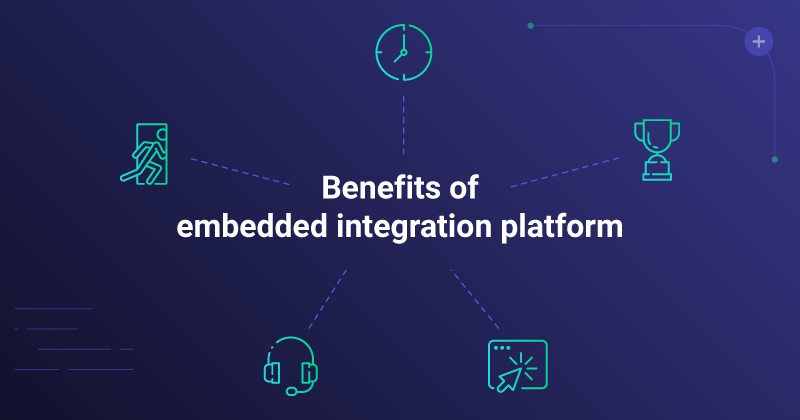Solve the integration problem. Get better at integrations.
For years, we took on items like that as quarterly or even annual goals at the B2B software company where I used to work. Building and deploying integrations for our customers was a constant pain point.
If you're part of a B2B software company, there's a good chance you know the pain I'm talking about. It turns out, most B2B software teams who need to provide customer integrations find it to be more difficult and time consuming than it seems like it should be.
At Prismatic, we work every day with B2B software teams looking to more easily build and deploy integrations for their customers. They make all different kinds of software for all different kinds of business customers, but when it comes to the integration challenges they're dealing with and what they mean by “getting better at integrations,” there are very clear common threads.
Today we'll kick off a series of posts looking at the most common goals B2B software teams have when it comes to integrations and how an embedded integration platform like Prismatic can help achieve them.
One of those common goals is speed up integration delivery in order to onboard customers faster. Let's dig in.
Speed up and smooth out new customer onboarding
Whether your customers onboard themselves or you have an elaborate process involving an entire project team, everyone wants to get new customers fully onboarded and deriving value from your product soon as possible.
Customers want fast and easy onboarding, a system that gets configured just right for their needs, and to start using it ASAP. From your team's perspective, the less time and expense you spend on onboarding, the better. Furthermore, for a lot of companies, the revenue from a new customer doesn't start rolling in until they're onboarded and live with the product.
When a new customer's implementation involves delivering integrations to their other systems – their ERP, POS, messaging system, security system, scheduling system, or whatever else depending on the industry you serve – those integrations all too often become the single biggest source of risk and delay in the entire project.
An embedded integration platform like Prismatic helps teams speed up and smooth out integration delivery so you can achieve faster, more predictable new customer onboarding.
Build integrations faster
Let's talk first about speeding up integration delivery.
Integrations are often the "long pole" in new customer onboarding, extending project timelines for weeks or even months, and costing you time, money, and customer goodwill as the process stretches out.
What makes integrations take so long, and what can be done about it?
Stop waiting for engineering capacity
At most software companies, developers build integrations. That means the speed at which you can deliver integrations is dependent on your engineering capacity and product roadmap.
Most onboarding tasks can be completed within your customer-facing teams, by team members whose schedules are optimized for fast customer onboarding. On the other hand, when integration work is done by developers, it has to compete for engineering capacity with other priorities like new feature innovation and urgent bug fixes.
The wait can be even longer if you're contending with product roadmaps that are scheduled far in advance, long release cycles, or a backlog of other integrations needing to be built. (I recall talking with someone whose team had a backlog of over 200 integrations to build! A big number, but not unusual.)
With Prismatic, you can untether your onboarding timelines from your engineering timelines.
Prismatic empowers non-developers to build integrations using an intuitive low-code integration designer. Pre-built components provide building blocks that you can assemble to create your integrations. Components handle things like connecting to third-party apps and services, integration logic, data transformation, authentication, and so on.
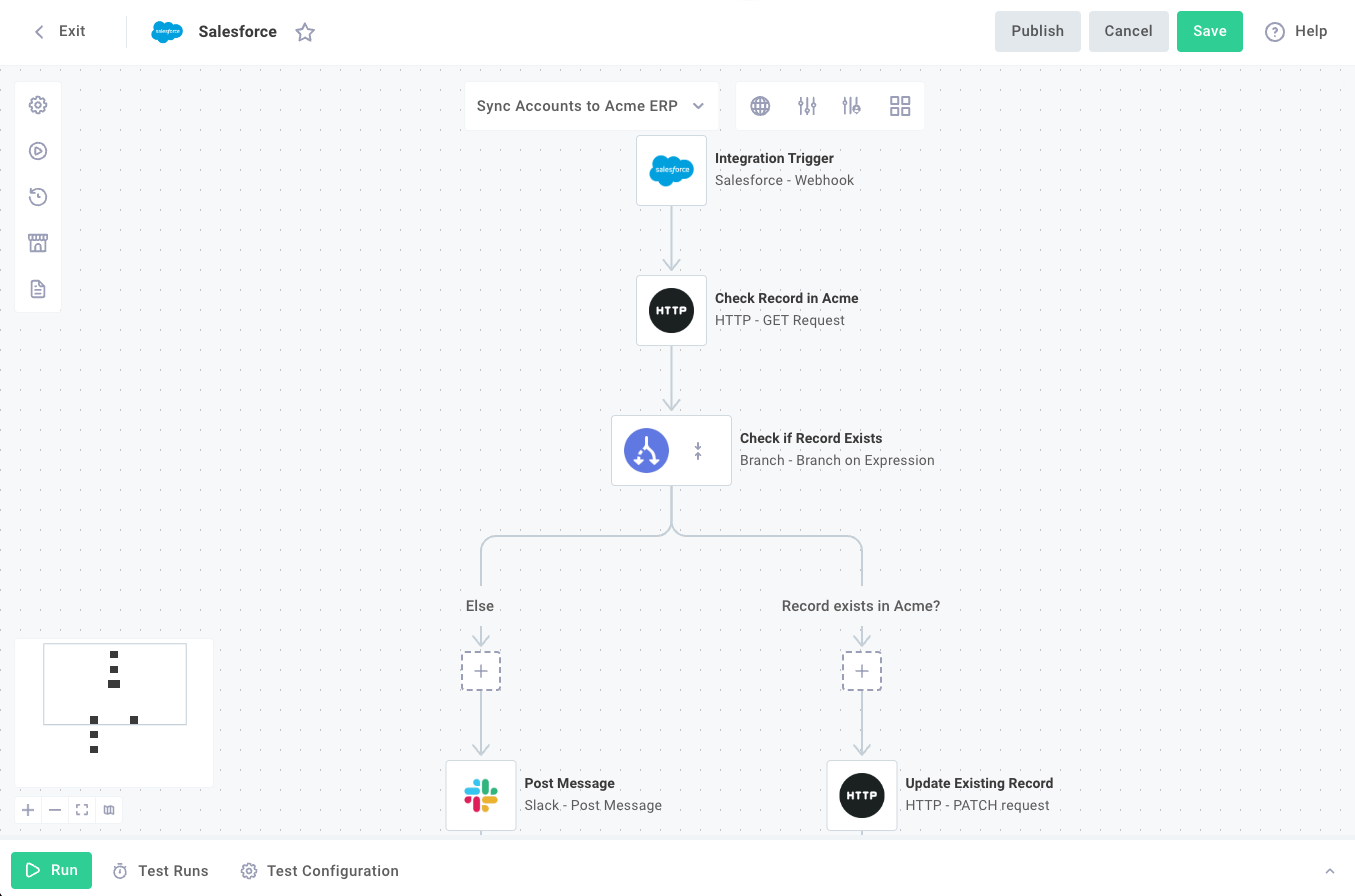
Of course, niche or vertical-specific integrations often call for something not provided by one of the pre-built components, and Prismatic provides full support for that. You can drop your own code snippets anywhere in an integration or involve your developers to build a custom component that does what you need – such as a connector to a niche third-party system or a bit of logic specific to your industry.
These can usually be turned around quickly since they're a much smaller effort than building a full integration from scratch. Non-dev integration builders can then drop them in to complete their integration and even reuse them in future integrations.
Empowering non-developers to build integrations lets you deliver them quickly, no matter the size of your engineering backlog, so you can shorten that “long pole” in the onboarding process.
Easily configure and deploy integrations
No two customer projects are alike, and integration needs are especially variable from customer to customer. Even when two customers need an integration to the same third-party system, they typically have different configurations, endpoints, credentials, and so on.
Many teams build integrations in a productized or reusable fashion so that they don't have to rebuild them for each customer who needs them. Even then, however, most customer-facing teams don't have tools to configure integrations themselves in the same way that they can help customers configure core product features.
As a result, even when your company has already built an integration your new customer needs, you find yourself still involving engineering team members to deploy it to the new customer. That often involves several back-and-forth iterations between you, your customer, third-party vendors, and your engineering team.
With Prismatic, integrations are fully reusable and heavily configurable so that you can easily deploy the same integration to multiple customers. Furthermore, Prismatic helps integration builders define an easy-to-use configuration screen so that customer-facing teams – or even customers themselves – can configure and deploy integrations with just a few clicks.
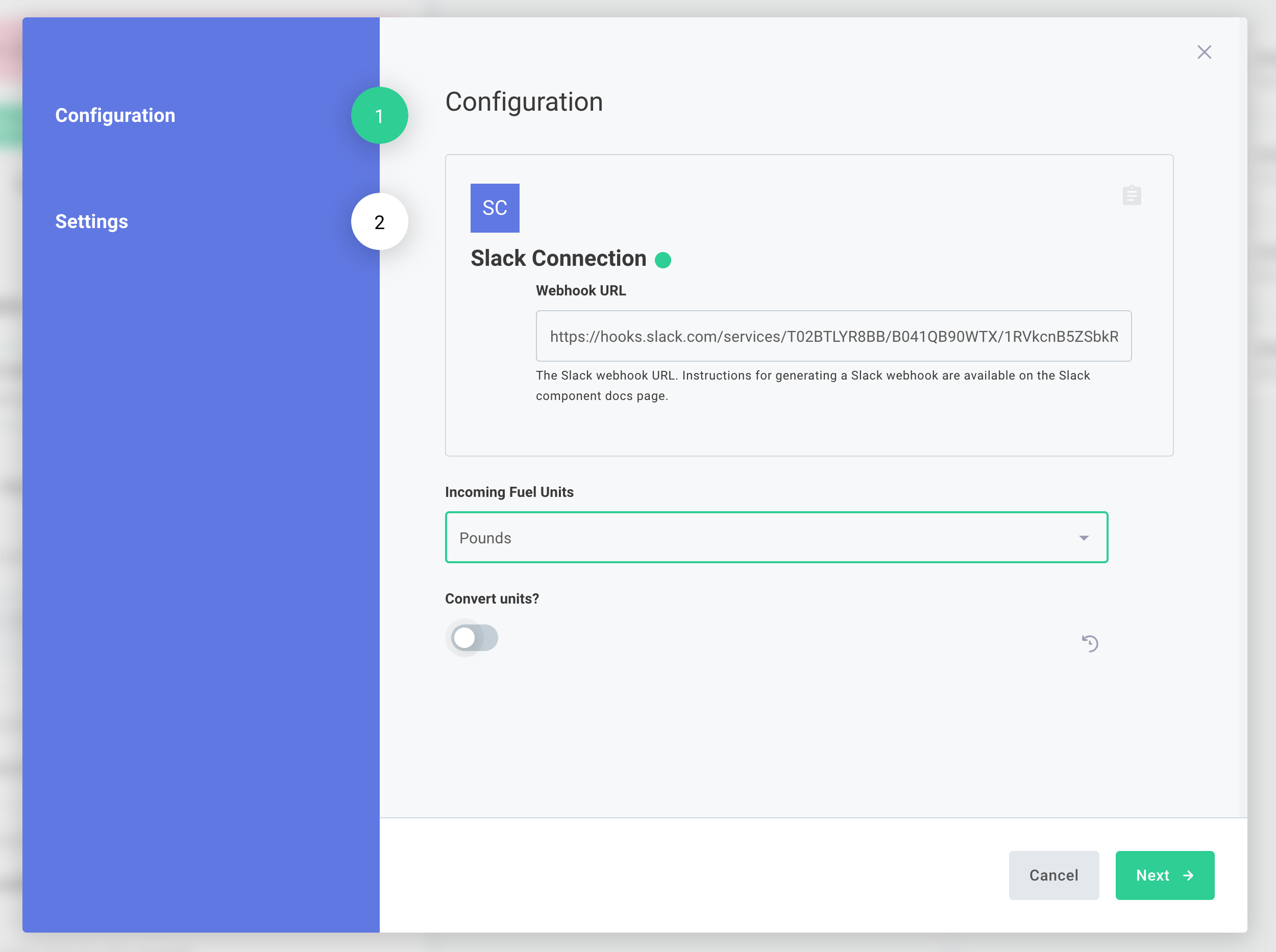
That's just one part of Prismatic's simple management environment for customer-facing teams. It also provides a way to let the customer enter their own credentials to third-party apps and services so they aren't emailing them to you or reciting them over the phone. You can even set up alerts indicating who at the customer (and your company) should be notified, and how, if something goes wrong with the integration once it's live.
It's important to note that none of that requires engineering involvement.
When your new customer onboarding often involves delivering integrations you already have, this vastly speeds up the process.
Minimize confusion and rework
Now let's see about smoothing out integration delivery.
Clarify integration expectations
A fundamental problem that makes integrations an unpredictable part of new customer onboarding is that integration requirements are often unclear.
There are many reasons for this. Sometimes integrations are sold as simply a "security system integration" or "inventory integration,"" with the idea that details will be figured out post-sale. Sometimes customers themselves don't have a crystal clear understanding of how they want an integration to work. Or perhaps they do, but then the scope creeps. Sometimes you're dealing with missing or inaccurate specifications from a third-party vendor. Or there's confusion between you, the customer, and the other vendor about who agreed to do what and when.
Whatever the reason, unclear integration expectations can lead to unpleasant surprises and rework when it's realized – often after weeks of work have been put in – that you've built an integration that doesn't meet your customer's needs. You end up taking a second pass, or sometimes a third, at building an integration that meets expectations, and all that rework delays the onboarding process.
What a frustrating experience for new customers, as well as your own team members who end up taking the heat.
Prismatic helps you get everyone on the same page before you start building an integration, and keep them there throughout the process. It does so by enabling you to store key integration documents like statements of work, requirements docs, and technical specifications right in the same system where you build and manage integrations.
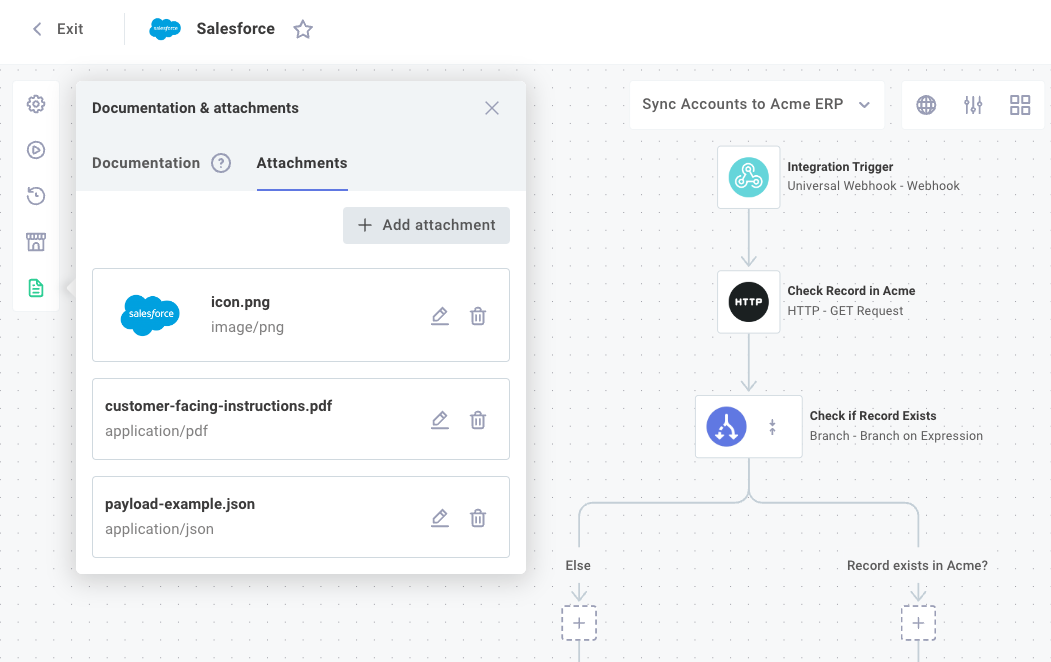
Because all members of your team, as well as customers and even third-party vendors, can access your Prismatic system, this is the perfect place to keep those agreements front and center throughout the integration process. They're easily accessible and can be referenced at any time by your internal teams, customers, and third-party vendors, leaving no question about how an integration will work, how it will be built, and who will do what.
When everyone's on the same page about integration requirements and expectations, onboarding goes much more smoothly.
Test to ensure everything's right
Another type of surprise happens when you don't have a way to test integrations in advance, and find out at the last minute – often on the day your customer's whole team is supposed to go live with your software – that they don't work.
Perhaps a vendor gave you an incorrect specification, or you were given a wrong credential, someone realizes they need another piece of data to be sent, or you had an incorrect field mapping. There could be all sorts of reasons. Then you end up with an urgent scramble to sort out the issue and fix it on a live system.
Prismatic provides a built-in testing framework so that you can ensure everything's right while you build and configure integrations, and iterate quickly and easily if it's not. You can even demonstrate test runs for your customer and third-party vendor. Robust logging makes it easy to dig into test results, share them with your customer and the vendor, and troubleshoot and fix whatever's needed.
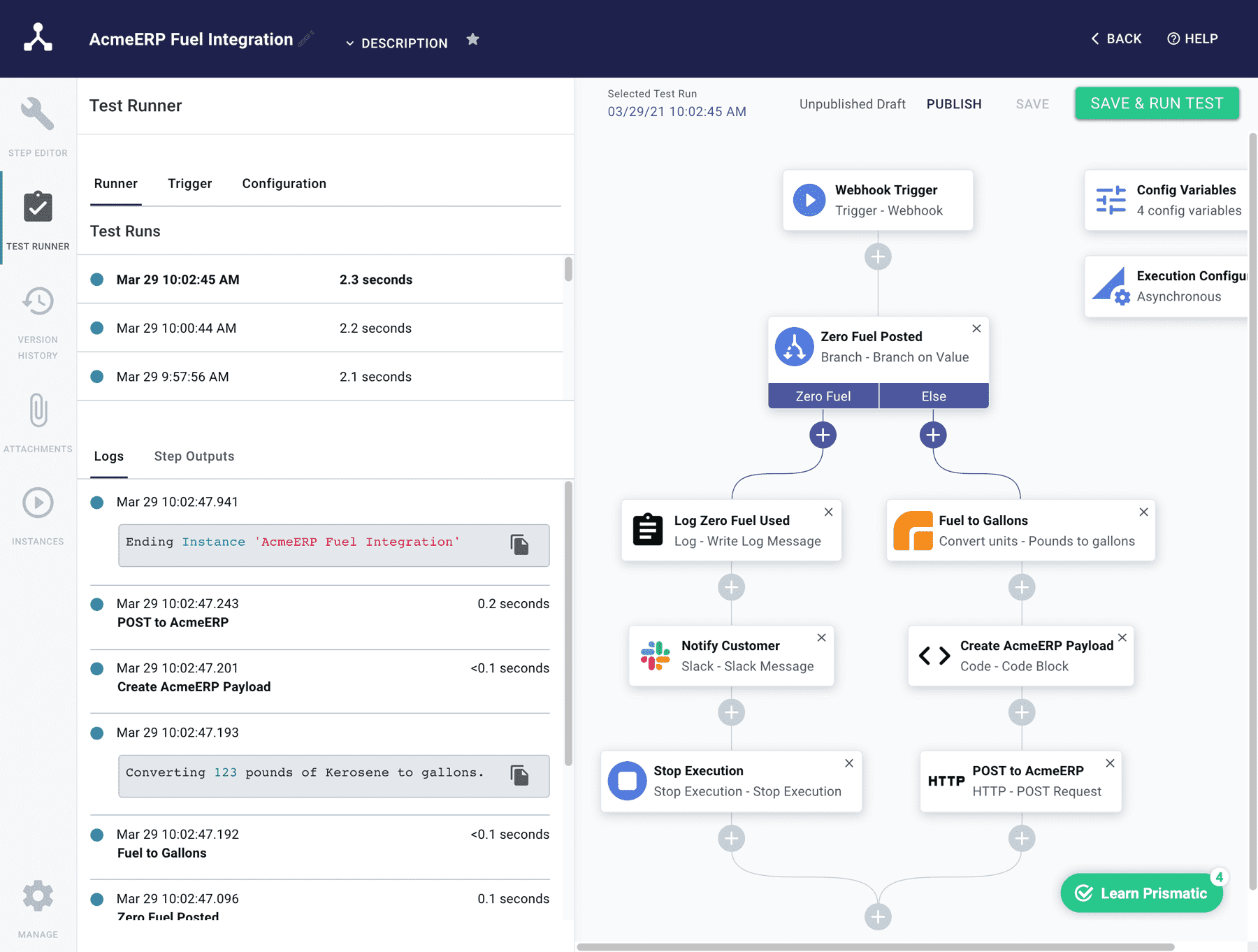
It's a great way to minimize last-minute scrambling and ensure your customer's transition to your software goes smoothly.
Learn more
For many B2B software companies, integrations tend to be one of the longest and riskiest parts of new customer onboarding. Prismatic empowers teams with tools to deliver integrations more quickly so they can achieve faster onboarding.
Stay tuned for more posts exploring common integration goals shared by B2B software teams and how they're achieving them.
Contact us if you'd like to discuss your own team's integration goals and how Prismatic can help.



